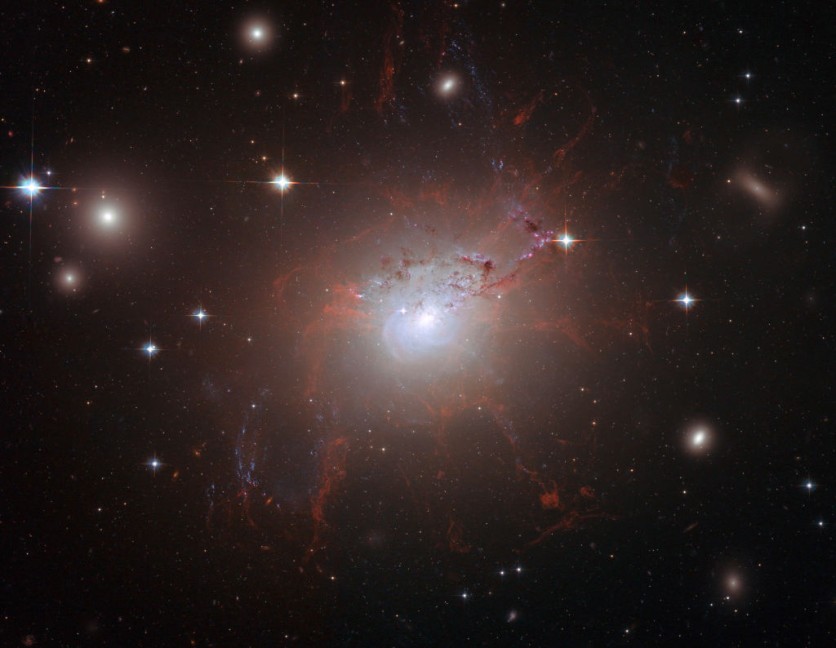In an unexpected twist, astronomers utilizing the MeerKAT radio telescope have stumbled upon an intriguing discovery in the depths of space, reported first by Phys.org.
They stumbled upon a radio nebula while observing the black hole binary system known as GRS 1915+105.
This newfound celestial object has been playfully christened "the Mini Mouse."

A Mini Mouse in Space
Pulsars are captivating celestial entities characterized by their intense magnetic fields and rapid rotations, and they are also known to emit beams of electromagnetic radiation.
Typically, these pulsars are detected through short bursts of radio emissions. However, on occasion, they can also be observed using optical, X-ray, and gamma-ray telescopes.
Led by Sara Elisa Motta from the Brera Observatory in Italy, a group of astronomers embarked on MeerKAT observations of the black hole binary system GRS 1915+105 and its surroundings.
During this observational campaign, which formed part of the ThunderKAT Large Survey Program, they unexpectedly encountered a feature resembling the famed "Mouse" radio nebula first detected in 1987.
In light of its resemblance, the researchers decided to christen this newly discovered feature in the GRS 1915+105 field as "the Mini Mouse."
Investigations revealed that the Mini Mouse radio nebula is generated by a supersonic pulsar called PSR J1914+1054g, also known as J1914, which was recently discovered using MeerKAT.
The nebula remarkably aligns with a newfound and faint candidate for a supernova remnant called G45.24+0.18.
With a spin period of approximately 138.9 milliseconds and a dispersion measure of around 418.9 pc/cm³, J1914 showcases a spin-down luminosity of 400 decillion erg/s. Its estimated characteristic age is roughly 82,000 years, and calculations suggest this pulsar is approximately 26,700 light years away.
Read Also : 'Death Star' Caught Swallowing a Planet Right in the Milky Way Galaxy, a First in Astronomy
Young and Isolated Pulsars
The team noted that if the actual age of J1914 is similar to its characteristic age, then the projected velocity of the pulsar should fall within the range of 320 to 360 km/s.
This velocity aligns well with the distribution of kick velocities for young, isolated pulsars, which center around 300 km/s with a dispersion of roughly 190 km/s.
"If the connection between J1914 and the faint SNR is correct, then we may have a faint, fast-spinning, distant young pulsar with a high kick velocity, i.e., a member of an under-sampled population, which could help extrapolate the local young pulsar velocity distribution to the wider Galactic one," the researchers wrote.
In summary, the researchers emphasized that the Mini Mouse represents the fourth known case of a bow shock associated with an escaping pulsar, where both the pulsar signal and the SNR associated with its birth have been observed.
This captivating discovery serves as another piece in the cosmic puzzle, pushing our understanding of these enigmatic phenomena to new frontiers.
The findings of the team were published in arXiv.
Related Article : Starry Pair: NASA's Hubble Captures Stunning Portrait of Spiral Galaxies Resembling Milky Way

ⓒ 2025 TECHTIMES.com All rights reserved. Do not reproduce without permission.

![Best iPads that Students Can Use in School [2025]](https://d.techtimes.com/en/full/461431/best-ipads-that-students-can-use-school-2025.jpg?w=184&h=103&f=516289300e12e9647ef3d5bd69f49b70)


